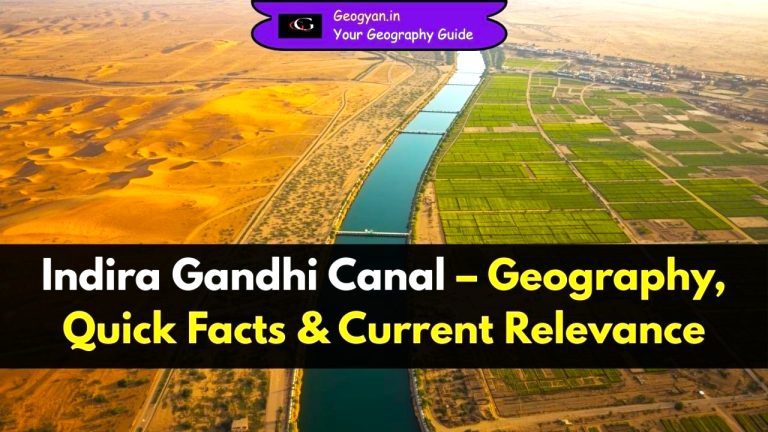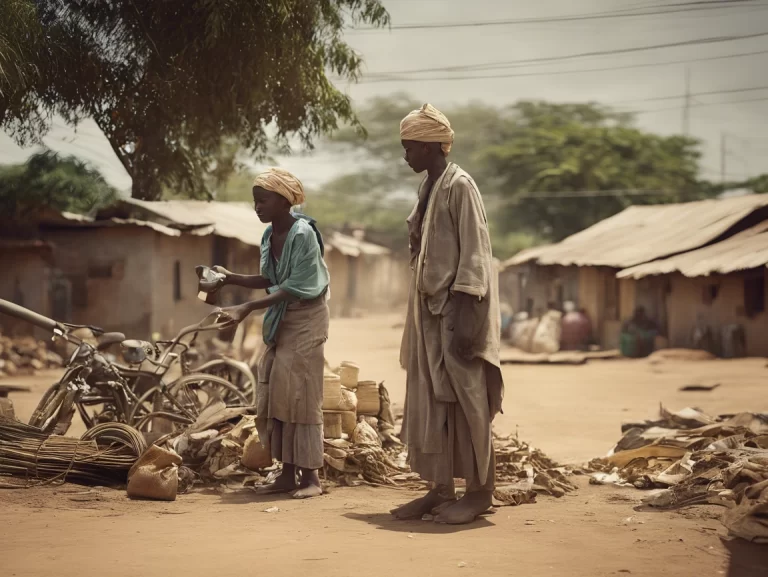The latest Living Planet Report 2024 released on October 10, 2024 from the World Wildlife Fund (WWF) has revealed a staggering 73% decline in global wildlife populations over the past 50 years, from 1970 to 2020. This unprecedented drop in biodiversity is a direct result of human induced environmental changes. From the destruction of natural habitats to climate change and pollution, human activities are pushing the planet’s ecosystems to their breaking point. This sharp decline serves as a wakeup call, stressing the need for urgent, unified global action to safeguard the remaining biodiversity and restore the ecosystems vital for human survival and environmental stability.

Key Causes of Biodiversity Decline
The WWF report analyzed 35,000 wildlife populations, representing 5,495 species across a range of habitats, including amphibians, birds, fish, mammals, and reptiles. It identified several major drivers of biodiversity loss:
1. Habitat Degradation: Continuous deforestation, urban expansion, and conversion of land for agriculture have led to the destruction or severe alteration of natural habitats. Forests, wetlands, and grasslands are being cleared at alarming rates, leaving little room for wildlife to thrive. This also reduces biodiversity’s ability to recover and adapt to environmental changes.
2. Overuse of Natural Resources: Excessive exploitation of natural resources, including overhunting, overfishing, and unsustainable logging, is depleting plant and animal populations faster than they can recover. Many species face extinction as their numbers dwindle due to unregulated or poorly managed resource extraction.
3. Invasive Species and Pests: Nonnative species introduced by human activities outcompete or prey on native species, destabilizing ecosystems. These invasive species often lack natural predators, allowing their populations to grow unchecked, further threatening local wildlife and biodiversity.
4. Climate Change and Pollution: Rising global temperatures, extreme weather events, and widespread pollution from industrial activities and agriculture are directly impacting species’ survival. Ocean acidification, air pollution, and toxic chemicals in water systems degrade habitats and make it difficult for many species to survive, reproduce, and adapt.
Ecosystem Specific Declines
Biodiversity loss has been particularly devastating in specific ecosystems. The report highlights three critical systems suffering the most:
- Freshwater ecosystems have experienced the steepest decline, with an 85% reduction in species populations. Rivers, lakes, and wetlands are heavily impacted by pollution, water extraction, and dam construction, severely threatening freshwater biodiversity.
- Land species have seen a 69% decline, primarily due to habitat destruction from agriculture, urbanization, and infrastructure development. Iconic species like elephants, tigers, and rhinos are among those at risk as their natural habitats shrink.
- Marine species have declined by 56%, with overfishing, plastic pollution, and warming oceans as the primary threats. Coral reefs, a vital part of marine ecosystems, are dying off at alarming rates, which could have longterm effects on fisheries and the global food supply.
Regional Impact
The impact of biodiversity loss is not uniform across the globe. The WWF report notes severe regional disparities:
- Latin America and the Caribbean have seen the most alarming decline, with a 95% drop in wildlife populations. This region, home to the Amazon rainforest, is losing biodiversity at a catastrophic rate due to deforestation, illegal mining, and agriculture, which are exacerbating climate change effects.
- Africa has witnessed a 76% decline, where poaching, illegal wildlife trade, and expanding agricultural activities have taken a severe toll on species such as elephants, lions, and rhinoceroses. In some parts of Africa, climate change is accelerating desertification, further threatening local ecosystems.
- Asia-Pacific faces a 60% reduction in biodiversity, driven by rapid urbanization, industrial pollution, and deforestation. In addition, wildlife trafficking continues to pose a significant threat to many endangered species.
- Europe, Central Asia, and North America have seen comparatively smaller declines, around 35-39%, due to conservation efforts and policies that have somewhat mitigated the damage. However, these regions were already significantly impacted before 1970, so the current decline adds to already weakened ecosystems.
Critical Tipping Points
The WWF report warns that Earth is approaching critical ecological tipping points—thresholds beyond which the damage to ecosystems becomes irreversible. These tipping points pose grave dangers to both the environment and humanity:

by algal growth, the corals die, and the fish and invertebrate populations that depend on the corals decline.
- Coral Reef Bleaching: Coral reefs are dying at unprecedented rates due to ocean warming and pollution. This loss threatens not only marine biodiversity but also the livelihoods of 500 million people who depend on coral reefs for fishing, tourism, and coastal protection.
- Melting Ice Sheets: The melting of the Greenland and Antarctic ice sheets is contributing to sea level rise, threatening coastal communities, and disrupting ecosystems such as the Arctic, where species like polar bears and seals depend on ice for survival.
- Seed Dispersal in Brazil: In the Amazon rainforest, large animals like tapirs and toucans play a crucial role in dispersing seeds from large fruit trees. As these species decline due to hunting and habitat loss, the forest’s ability to regenerate is compromised, reducing biodiversity and carbon storage capacity.
Threats to Food Security
The WWF report also sheds light on the link between biodiversity loss and global food insecurity. Currently, 735 million people face hunger, while more than 90% of crop varieties have disappeared from fields, limiting agricultural diversity. Modern agricultural practices focus on a few high yield crops, reducing the genetic diversity needed for resilience against pests, diseases, and changing climate conditions. Moreover, overfishing is threatening marine ecosystems, which provide a primary protein source for billions of people. As biodiversity declines, so does the capacity of ecosystems to support human populations, particularly in developing countries.
Call for Urgent Action
To address this global crisis, the WWF calls for immediate and transformative actions:
- Tripling renewable energy production and doubling energy efficiency by 2030 are essential to combat climate change, which is a key driver of biodiversity loss. Shifting away from fossil fuels to cleaner energy will reduce greenhouse gas emissions, slow down global warming, and protect ecosystems.
- Supporting Indigenous Peoples in their efforts to conserve biodiversity is crucial, as they are often stewards of some of the world’s most intact and biodiverse ecosystems. Indigenous communities possess invaluable traditional knowledge and practices that contribute to the sustainable management of natural resources.
What’s Next?
The WWF stresses that the next five years are critical. Decisions made between now and 2030 will determine whether humanity can halt the rapid decline in biodiversity and avoid catastrophic tipping points. Governments, businesses, and individuals must collaborate to strengthen conservation efforts, implement sustainable practices, and invest in restoring ecosystems before it’s too late. Immediate actions will shape the future of Earth’s ecosystems, and by extension, humanity’s ability to survive and thrive in a world where nature and people are interdependent.
By acting now, we can reverse the damage, restore biodiversity, and secure a sustainable future for the generations to come.
Test Your Knowledge with MCQs
1. What percentage of global wildlife populations have declined since 1970 according to the WWF Living Planet Report 2024?
a) 56%
b) 73%
c) 85%
d) 69%
2. Which region has seen the most dramatic decline in biodiversity, with a 95% decrease in wildlife populations?
a) Africa
b) Asia-Pacific
c) Latin America and the Caribbean
d) Europe and Central Asia
3. What is the primary cause of biodiversity loss globally as mentioned in the WWF Living Planet Report 2024?
a) Climate Change
b) Overuse of Resources
c) Habitat Degradation
d) Pollution
4. Which ecosystem has suffered the greatest loss of species populations, with an 85% decline according to the report?
a) Marine Ecosystems
b) Land Ecosystems
c) Freshwater Ecosystems
d) Desert Ecosystems
5. What is the role of large animals such as tapirs and toucans in Brazil’s Amazon rainforest?
a) Pollination
b) Seed Dispersal
c) Climate Regulation
d) Forest Regeneration
6. According to the WWF report, how much of the world’s crop varieties have disappeared, contributing to food insecurity?
a) 50%
b) 90%
c) 40%
d) 60%
7. Which of the following is a key recommendation by WWF to combat biodiversity loss and climate change by 2030?
a) Increase logging activities
b) Tripling renewable energy production
c) Doubling deforestation
d) Reducing freshwater use by half
8. In which oceanic ecosystem are coral reefs particularly at risk due to rising sea temperatures and pollution?
a) Arctic Ocean
b) Indian Ocean
c) Pacific Ocean
d) Southern Ocean
9. What percentage of the global population faces hunger, according to the WWF Living Planet Report 2024?
a) 500 million
b) 735 million
c) 1 billion
d) 850 million
10. What is the expected global temperature increase by the end of this century if national climate commitments remain as they are?
a) 1.5°C
b) 2°C
c) 2.5°C
d) 3°C
Answers:
1. b) 73%
2. c) Latin America and the Caribbean
3. c) Habitat Degradation
4. c) Freshwater Ecosystems
5. b) Seed Dispersal
6. b) 90%
7. b) Tripling renewable energy production
8. c) Pacific Ocean
9. b) 735 million
10. d) 3°C





























